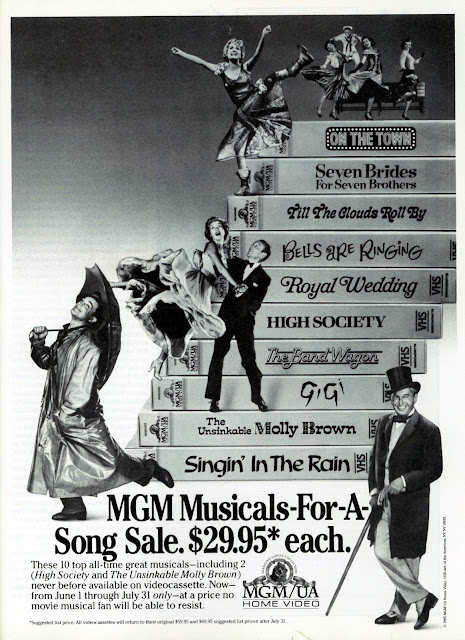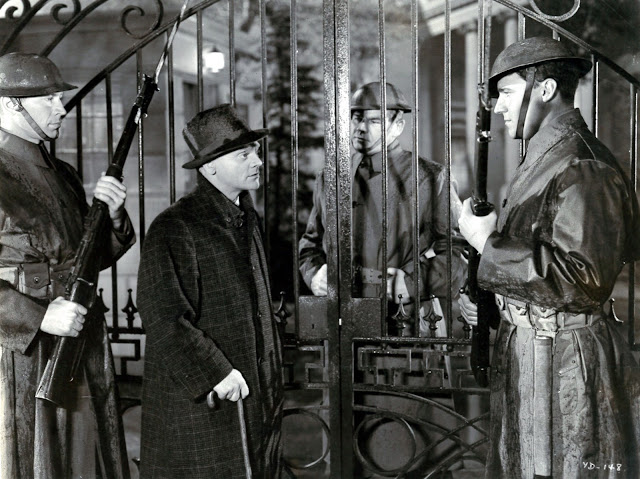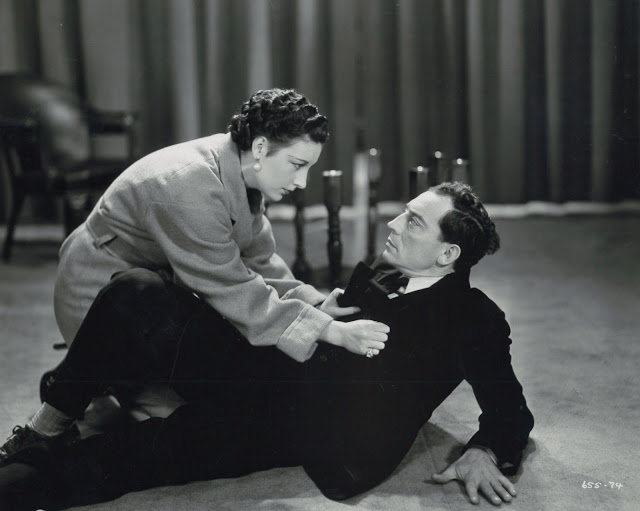 |
| It's 1983, and Gene Kelly Is Ushering In The Real Golden Age For Vintage Movies |
Old Extinct Movies Are Better Than Ever --- Part One
Being another of those hectoring "opinion" posts like THISandTHIS, mercifully spread to two parts. As Bob said when Bing started to sing, this might be a good time to go out for popcorn:
There's been talk in a last year of old movies facing extinction like dinosaurs, whereas it seems to me the only dinosaurs may be ones making that complaint, judging by what is, by all appearance, a peak period we're experiencing of interest and enthusiasm for vintage pix. Do so-called "millennials" indeed shun classics? Naysayers (folk I'd guess to be at least as old as me) claim there'll never be another Golden Age of film appreciation like the 60/70's, when viewing generations were said to happily co-exist in shared love of relic stuff. I'd say agreed to those who claim today's generation is not interested in the classic era to degrees we were ("we" being those who came of age in mythic Gold days). The current generation is, in fact, moreengaged than any I grew up with.
We who aren't deep in the life of IPad/Phones, Twitter, and the universe of social networking have but faint idea of what goes on. Old-timers feed off each other's mistaken notion that no one loves old movies like we love old movies. What goes onamong a large and appreciative modern-day film culture sometimes makes me wish I'd been born closer to now than back when. There are high school students, many, not a few, who blog or tweet insightfully on film. They didn't come to it the way middle-age and olders did. Pictures that were nowhere in my alleged Golden Age can be seen in the palm of their hands.
To those who would say this is no way to view a classic, I'd refer to a ten-inch B/W tube that many a night traded me classics for sleep through a glaze of snow and endless interrupt for ads (imagine viewer reaction if TCM dropped a commercial into one of their movies).This was reality of coming up then. I was lucky to see a Bride Of Frankenstein once in three years, always diminished through vagaries of syndication. Now there are numerous formats by which to enjoy it in a next five minutes. Today's student of film needn't wait for favorites to surface in revival joints ancestors attended. Those are mostly gone in any case, and never mind the romance of revival housing ... many, if not most, of them used 16mm prints that wouldn't pass muster today. Movie fans now can watch whatever they want, anytime and anyplace. It's (mostly) all out there somewhere, legitimate or otherwise.
TCM remains the temple around which everyone gathers. That is the happy co-existence many recall (or imagine) from the 60/70's, and it's a larger body by far than Shangri-La seen through rose-color glass. When came the truest awakening to classic movies? Everyone likes to think it was when he/she was young and discovering the life. I was introduced in the 60's and entrenched by the 70's. That was a Golden Age only because my enthusiasm was so, but if I'd come along in the 80's or 90's, things would have been better, at least more accessible. They had video cassettes, plus AMC when it was starting out and worthwhile. Surely this would have been a Golden Era had I been ten years old in 1984 instead of 1964.
There were two dozen oldies broadcast by the 80's for every one that I plowed for and could barely receive on stone-age TV, and wasn't TNT rolling out recently acquired MGM and pre-48 Warner titles by 1985? The Showtime network had Red-Headed Woman, Reunion In Vienna, and any number of rarities around this time (and now Reunion In Vienna's gone again, though homemade VHS of it floats freely). Certainly I wasn't the only one watching these. Things would improve yet, with TCM's 1994 arrival a buff's equivalent to invention of the printing press. This to my mind is where our Golden Age truly began. DVD's bow a few years later merely confirmed that here was opportunity's loudest knock to discover and make a life's pursuit of classic movies. The ability torecord on VCR and later DVR made film librarians of us all. I still have, and can still watch, a VHS cassette of Manhattan Melodrama captured off


































































































